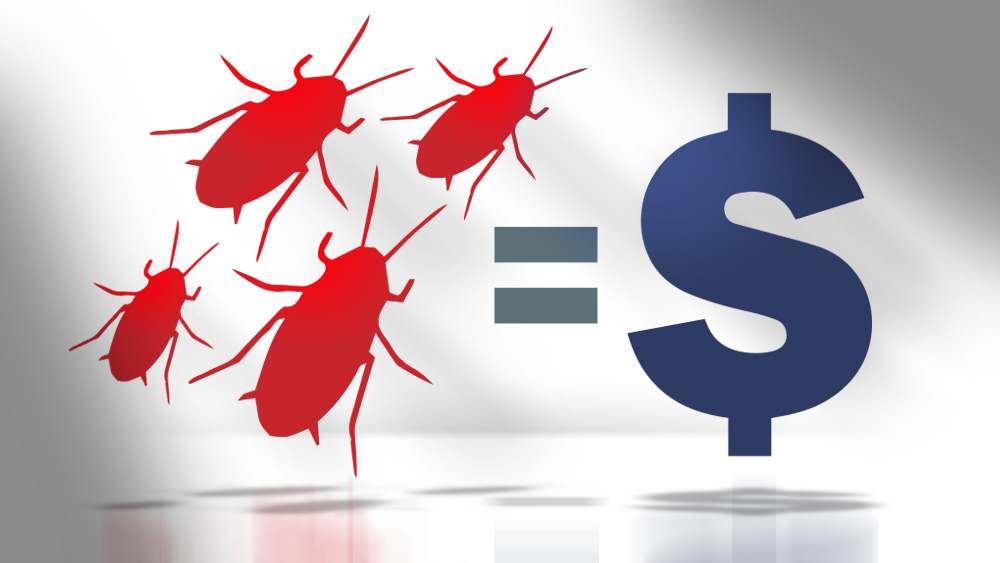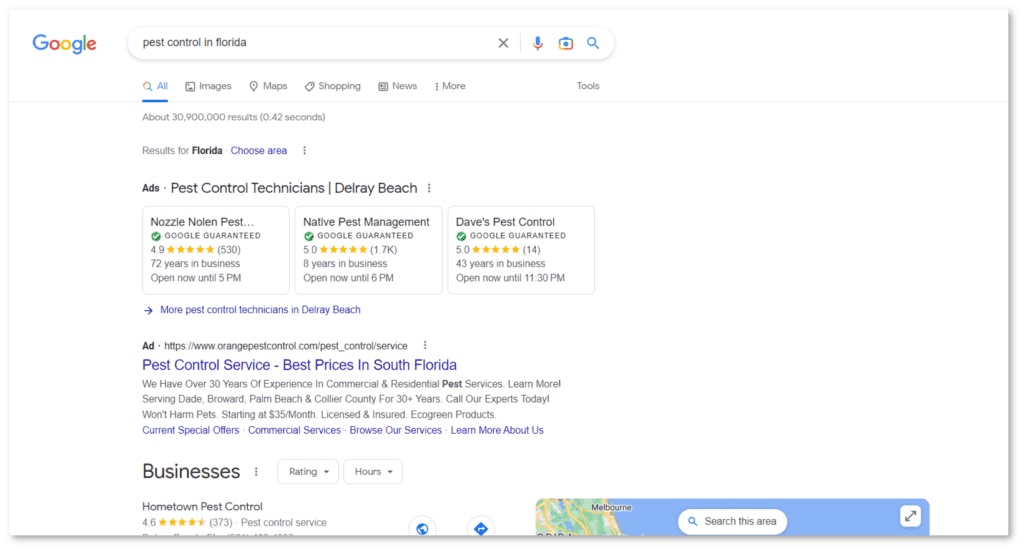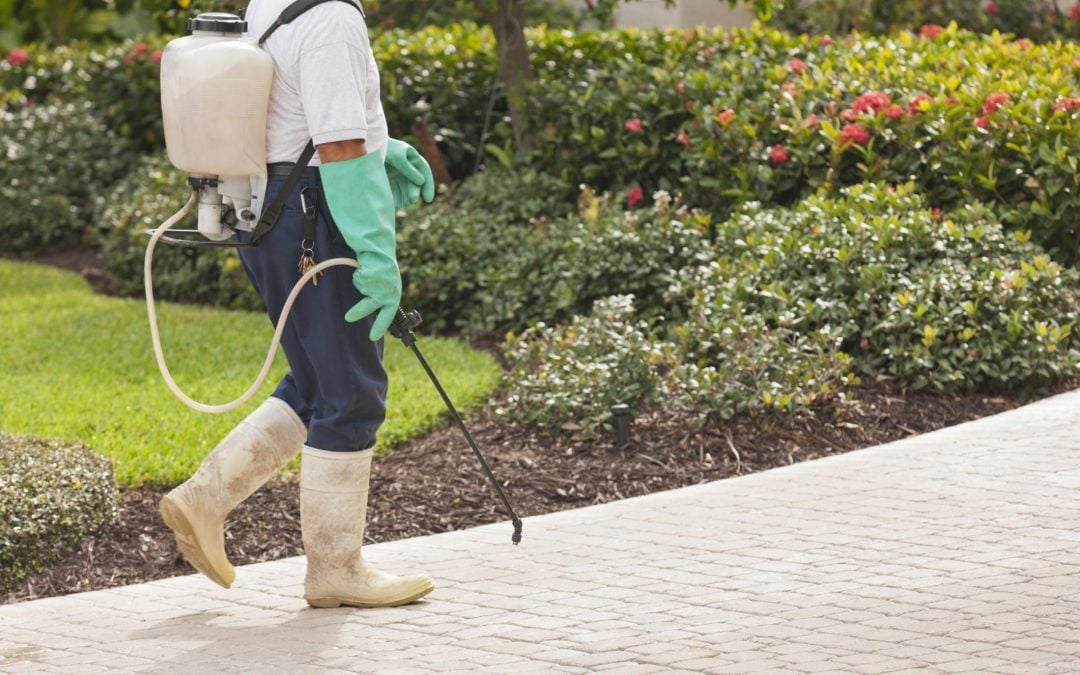How to Write a Lawn Care Contract (with Free Downloadable Template)
Use our lawn care contract template and tips to create and send contracts faster,...

The key to running a thriving business in any industry, including pest control, is attracting and converting customers. To do that, you need a strategy to generate more pest control leads.
Generating leads can be a challenge. First, you have to make a memorable first impression. What’s more, you must find ways to make that impression stick until potential pest control customers start looking to hire someone.
To reach the widest audience and attract the most valuable customers, you’ll need a holistic lead generation approach.
Pest control companies often find that lead generation is one of their biggest challenges. Even if you do everything right, it can still be tough to find customers who are ready to buy.
In this article, we’ll provide a comprehensive list of best practices for mastering pest control lead generation.

We’ll start with the low-hanging fruit. Lead generation partnerships are easy to establish and can be powerful.
When you partner with other local businesses focused on the same target audience, everyone wins. Largely, that’s because this type of lead development tends to yield qualified leads.
Here are some examples of businesses that would partner well with a pest control company:
Partnering with wildlife control companies, if you don’t already provide those services, can be beneficial to both parties.
The focus is a little different, but there’s clear alignment. You take care of pests. They help homeowners with nuisance animal removals, like raccoons, bats, and squirrels.
Both companies are in the same field but offer different services. These partnerships can be a highly effective way to obtain leads.
It’s also a good idea to create business partnerships with real estate agents.
Pest control is often needed before a property is sold. Additionally, new homeowners may seek a recommendation from their agent about long-term pest control. So, fostering connections with local real estate agents makes a lot of sense.
You can also help grow their business with referrals. That will strengthen your partnership and make a powerful impression on your existing customers.
Another potential business partner is remodeling contractors. Construction professionals must deal with pest damage and infiltration on a regular basis when renovating homes.
Plus, homeowners need emergency services to resolve these issues. And when they do, it’s not uncommon for them to look to their contractors for guidance.
This relationship can go both ways, as well. When you’re on a jobsite, you can recommend your remodeling partners—especially when there’s extensive damage as a result of pests.
Homeowner associations (HOAs) can be another route for partnerships.
HOAs typically oversee the maintenance of a community. So, they’ll almost certainly want to ensure adequate pest control.
A good way to make inroads with an HOA is to offer a free one-time service for a community shared space or residents of the neighborhood. As a result, they may feel more inclined to share your contact information with members.
These partnerships can yield valuable pest control leads.
But while partnerships can form a solid foundation, you’ll want a wider network, too. Let’s turn our attention to other ways you can increase your reach.
RELATED ARTICLE: 4 Pest Control Marketing Ideas to Attract Customers
How connected are you to your local business community? The greater your local visibility, the more leads your business is likely to generate from within the community.
And don’t think that networking in person is a waste of time. Research shows that businesses are 24% more likely to gain new customers from in-person networking compared to online networking.
Here’s how to get more involved.
To identify partnership opportunities, you’ll need to get to know other local businesses. Joining a local business association or chamber of commerce allows you to do that easily.
Events hosted by these organizations are a prime opportunity to meet business owners. Focus initial conversations on how you can mutually benefit one another.
Keep in mind, too, that potential partners don’t have to be in the same industry as you. The goal here is simply to cultivate a relationship. The broader your network gets, the easier it will be for you to help others and for them to help you.
As a bonus, this networking will also create opportunities for you to service the businesses or residences of those in your network.
Property managers always need a list of home service providers handy. It’s their responsibility to keep a property in good shape, including pest control.
If you join associations focused on these industries, you can continue expanding your network.
Again, this is about creating connections. You don’t have to go into every conversation plugging your business. In fact, it’s best that you don’t. Instead, start by just getting to know folks. Listen to their challenges before you start pitching your business.
In time, you’ll spot all kinds of mutually beneficial opportunities. But you have to invest the time to attend their events to reap the benefits.
Making connections with a wider net of businesses can help you drive more commercial pest control work. Many companies require these services, including restaurants, hotels, retail, grocery stores, and similar businesses.
Industry-specific trade shows are a wonderful way to make these connections. In fact, businesses have reported that 5%-20% of their customers come from trade shows.
At these shows, you can meet decision-makers and discuss your services. Even if they’re currently working with a competitor, it’s worth your time to make contact. If it turns out they aren’t satisfied with their current service, that’s a lead just wanting to be worked.
Expanding your network is one more strategy to include in your lead generation plan. Now, let’s turn to marketing efforts.
Digital marketing has one primary objective—to attract and convert leads. There are many different tactics and strategies for doing this.
Can you launch successful digital marketing campaigns all on your own? Absolutely.
But you won’t be able to do everything out of the gate. Instead, we recommend starting with a few specific tactics.
Focus on proven lead gen options.
Here are a few tips. (You can also find more advice in our Pest Control Marketing Guide.)

Local buyers often start their purchase journey with an online search.
In fact, 78% of consumers use online search to find information about local businesses more than once a week. So, it’s critical that your company be in the organic search results.
And that’s exactly what SEO supports.
Content on your website, from landing pages to blog articles, should focus on location-specific keywords. Why? Because those are the words potential buyers will take to Google.
Terms like the city you’re located in or the specific area you serve can be powerful.
Another component of appearing in local search results is ensuring you have complete profiles on Google Business, Yelp, and Bing Places. These review sites (in the minds of many of your customers, that’s what they are) impact how your whole website ranks.
Google, for example, looks to your Google Business Profile for critical information. You want to make sure your online profiles feature your location, services, hours of operation, and contact info.
Organic search rankings also take into consideration backlinks from reputable websites. Search engines see these as an “endorsement” from high authority sites.
So, a little PR work isn’t a bad idea at all. All you have to do is go back to the fundamentals of business networking.
For example, your local news station might be working on a story about pest control challenges in the area. If the reporters are in your network, they may contact you for a comment. They might even include a backlink to your business.
Naturally, this tactic works best in smaller communities. If you’re in a large metropolitan area, it will be tough to get that kind of exposure.
You should also try to win some backlinks. Backlinks are just links to your website from other websites. The more reputable and trustworthy the site linking back to you, the better.
Backlinks can easily be part of those business partnerships we covered earlier. Many businesses have a partners landing page, and it would be easy to add one to your own website.
Pay-per-click advertising (PPC) is closely related to SEO.
PPC ads show up with organic (unpaid) search results. And even though PPC ads are paid ads, you still need to craft them with SEO in mind.
PPC is a fairly simple arrangement. You bid on keywords on search engines like Google and Bing. You can even set your maximum budget. Then, as those keywords are used in searches, your ads have the potential to be featured with organic results.
Here’s the best part. You only pay if someone clicks on the ad. (Hence, the name.)
To give you an idea of potential, here’s some recent benchmarking data for “home improvement” businesses:
PPC can be a great way to generate instant leads. However, it’s important to keep some best practices in mind. After all, you don’t want to blow through your entire marketing budget and have nothing to show for it.
Social media marketing is another essential component of digital marketing.
Social media platforms have become robust marketplaces. Folks turn to sites like Facebook and Instagram to research companies and read reviews. Being active on social media can dramatically increase your visibility.
Plus, this is a prime opportunity to engage your target audience directly.
Here are three sites to prioritize pest control social media marketing efforts:
Nextdoor is a local networking app for neighborhoods. Homeowners can chat, share info, and find local services.
Because online reviews are powerful, Nextdoor has the potential to be a great way to generate leads. You can use it for both paid and organic campaigns.
Nextdoor allows you to run advertisements with priority placement in newsfeeds and search results.
If users are looking for pest control, you’ll appear. That, in turn, can lead them to your business page.
Create a free business page to share your company’s services and contact information. You can also invite current customers to leave reviews.
Facebook is a great channel to connect with homeowners in your area. Like Nextdoor, there are paid and organic options.
Facebook ads promote your business based on the audience you define. You can target based on location, demographics, and interests.
These ads will appear in feeds where they can easily result in clicks, generating leads.
Organic Facebook posts are an excellent opportunity to share tips, knowledge, and promotions with your customer base.
Be consistent. Post often. Make sure your posts are valuable to your audience. And consider creative ideas to grow followers.
After all, the more followers you have, the more likely someone will discover you on Facebook.
RELATED ARTICLE: 4 Ways to Use Facebook to Attract Pest Control Customers
LinkedIn is a professional social media platform. Connections here are more likely to be business-to-business. That makes it a great option for commercial businesses or for developing partnerships.
You can use LinkedIn paid ads just like you’d use paid ads on Facebook. The difference is the audience.
On LinkedIn, you’ll target other businesses needing pest control services versus individuals.
Use your LinkedIn company page to share who you are and what you do. Prospective customers—even residential customers—may look you up on LinkedIn to learn about your business.
You can also post content here. Once again, focus on content primarily for a business audience.
| RELATED ARTICLE: 4 Social Media Tips for Pest Control Companies
Next, let’s pivot to other lead-generation strategies.

Streamlined sales and customer service processes contribute to successful lead generation. When sales professionals respond quickly to inbound leads, conversions tend to improve.
That’s why you need a sales plan.
Customer service can also impact leads. If you treat your customers well and are responsive to inquiries, they’ll be much more likely to refer you to friends and family.
Here are a few best practices to support these initiatives.
A pest control app is an excellent tool for technicians. A solid app will give them the ability to schedule consultations right from their phone. Talk about impressive customer service.
Remote access also provides a way for those in the field to easily share content or answer questions.
YOU MIGHT ALSO LIKE: 6 Top Features to Look for in a Pest Control Technician Mobile App
Marketing automation features keep sales and customer service moving. The fewer roadblocks there are, the easier it is to close sales.
For example, consider sending automatic emails to prospects when they interact with your company. A well-crafted email immediately following a form fill on your website can make a strong impression.
Following up with existing customers is essential, as well.
(You can find lots of valuable information on automation in this Pest Control Marketing Guide. )
Reviews from customers are a great way to build credibility. However, not every online review will be positive.
Regardless of where reviews are posted or what your reviews say, you want to have a process in place to respond to these in the most professional way. That gives potential customers a clear idea of how responsive you are.
When you get bad reviews (and you will—everyone does), don’t argue. Instead, thank the reviewer for their feedback and, if possible, offer to correct the issue. It’s critical that you turn bad reviews in your favor. Other potential customers will be watching.
Managing these aspects of lead generation offers the opportunity to achieve more referrals.
KEEP READING: How to Generate More Online Reviews for Pest Control
Ensuring customers have great experiences with your company is an excellent practice for retaining them. It can also lead them to refer you to others needing pest control services. The same goes for the people in your partner network.
These direct recommendations are considered high-quality pest control leads. Plus, the conversion rate for referral marketing is 3-5 times higher than any other marketing channel. So more of those high-quality leads are likely to become customers.
So, how can you take advantage of the power of referral marketing?
To obtain referrals, you’ll need a plan.
Very few customers will leave a review of your business on their own. Instead, you need to find ways to invite them to make a referral. Partners may need some encouragement as well.
Satisfied customers and active partners will often refer you without your intervention, but it always helps to ask. Make this a central message in communications to customers and partners through email follow-ups.
You could also send email newsletters with special discount codes they can share. Or you might even set up a web page with a discount for reviews and referrals.

Referral requests often come with the promise of a reward for the referrer. Incentivizing customers and partners can be the nudge they need. For customers, it could be a discount for future services or a gift card. For partners, you might offer revenue sharing or discounts on personal services.
Keep in mind that there are drawbacks to incentives though. Namely, that they cost you money.
Getting referrals is great, but how do you manage them? You’ll want to consider all the logistics of this before putting it into place.
Technology can be a big help in managing referrals. A pest control business management software will be vital. It allows you to customize communications, manage leads, and identify insights about your referral efforts.
Additionally, there are referral marketing software platforms that automate the process.
Keeping your pest control leads pipeline full will determine your company’s success and profitability. Adding new customers enables you to grow incrementally.
You can deploy a holistic strategy for lead generation and management by leveraging all these best practices and tactics. If you’re looking to get started right away, here are a few next steps you can take:
| RELATED ARTICLE: Creative Pest Control Advertising Ideas to Boost Your Business

Use our lawn care contract template and tips to create and send contracts faster,...

Lawn care conferences give you access to like-minded professionals, networking opportunities, new trends and...

Have you always felt comfortable with, and maybe even fascinated by, bugs and rodents?...